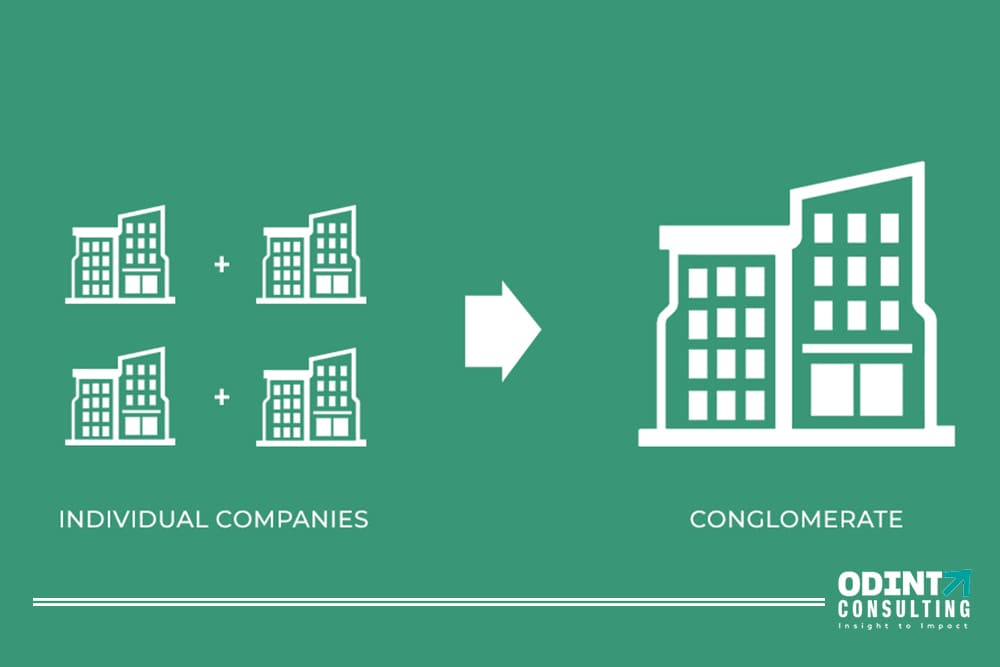
Whenever it comes to corporate enterprises, you’ve certainly heard that there’s generally one majority owner that oversees several other firms that run independently. This is often achieved by the main company that controls significant holdings in the little businesses. A conglomerate is a term used to describe a main corporation or entity.
Conglomerate Meaning
To prevent depending on a specific brand for revenue, conglomerates indicate corporate development through diversity.
Several businesses grow their operations in a similar industry. Every company operates separately, having distinct Directors in charge of earnings. It enables commercial activities to be specialized by utilizing specialist labor and expertise. Associates keep reporting to the parent organization, which oversees them altogether. Associates must engage in conduct consistent with the major corporate image. Several industrial conglomerates include plenty of subsidiaries, many of which are studied and classified on the stock exchange. The major firm’s SEC reports are combined with their separate quarterly earnings.
How Is Conglomerates Formed?
Firms can be formed into a conglomerate in a range of methods, including a mix of methods.
- Growth: The method entails restructuring process and reorganization, as well as the formation of the major organization to control a series of smaller companies.
- Attachments: Another strategy is to expand a company’s operations or a traditional, each company into emerging industries or sectors.
- Mergers: One of the most prevalent methods is through mergers, which entails purchasing other businesses. If a potential business is large sufficient, it may not simply become a division; rather, it and the purchasing business may combine, uniting their skills, facilities, money, and staff into a single entity.
Reasons For Forming A Conglomerate Company
A company could agree to join a conglomeration for a myriad of purposes. The following are as follows:
- Following the foundation of the conglomeration, the organization might pursue appealing earnings from the potential subordinate, presumably current or predicted.
- Another motive for the development of a conglomeration is a need to spread to minimize potential losses and to ensure that a deficit in one sector is balanced by earnings or increases in the other.
- A combination is a rare combination as a hedge against the danger of a subordinate firm.
- Another of the primary motivations for building a conglomerate is to fulfill a goal to get engaged in a sector that is unrelated to the firm’s primary objective or economic function.
- A conglomeration can also be created to assist a corporation to migrate to a separate line of operation.
Benefits Of A Conglomerate Company

Some of the benefits of a conglomerate company are as follows:
- Potential for invested capital: It can lower its investment risk in a firm that operates in a foreign product all while searching for an additional economic outlook beyond its core. Soon as the opportunity occurs, the company can call on executives from a multitude of sectors in its industry. It aids most efficiently and productively.
- Business Expansion: The company’s equity diversification is aided by the combination of the conglomerate. It assists in resolving the risks associated with a weak economy. If one segment of the market is degrading, the firm has an opportunity to improve the issue by performing well in another varied area. It is widely regarded as a conglomerate’s strategic orientation.
- Increases the number of customers: The company can deliberately market its products to some other company’s clients. As a result, the agreements and perks can be expanded.
- Additional Money Is Put to Good Use: Whenever a firm has too much revenue but requires extra opportunities to expand in its sector, it invests it in a different organization that can utilize its idle resources.
Drawbacks Of A Conglomerate Company
Some of the drawbacks of the conglomerate company are as follows:
- Issues with Leadership: Whenever multiple enterprises with distinct backgrounds join forces, administration becomes a huge concern. All previous clients’ assets are forwarded to the other company, which may use a specific accounting system. This is quite inconvenient for administration.
- Zero prior knowledge: It can sometimes be dangerous for a purchaser because the company’s board is unlikely to have past knowledge of the industry within which objective competes. As a result, the acquiring organization may not be able to take advantage of the anticipated beneficial convergence situations, such as broadening offers. The lack of industry experience may cause the goal of the organization’s presentation to deteriorate.
- Change in company’s activities’ concentration: In a conglomerate, when different businesses are merging. Recognizing the fresh company market, firm operations, and so on takes a lot of action on the part of the administration. As a consequence, firms are shifting their focus away from the existing operation of the company and onto other industry sectors, potentially resulting in bad performance across all sectors.
Looking for an Expert Guidance?
Get 30 minutes of free consultation
with our company formation experts!
Error: Contact form not found.
Examples
Some of the examples of conglomerate are as follows:
- Amazon
- Johnson & Johnson
- Procter & Gamble
- Warner Media
- Tata Group
- ITC limited
FAQ’s
It is a company that consists of multiple divisions that operate with often diverse fields. Branches are generally formed based on deals or merges. They each have their bosses and run their businesses. Because of the quality work and industry-specific skills, it enables specialization.
